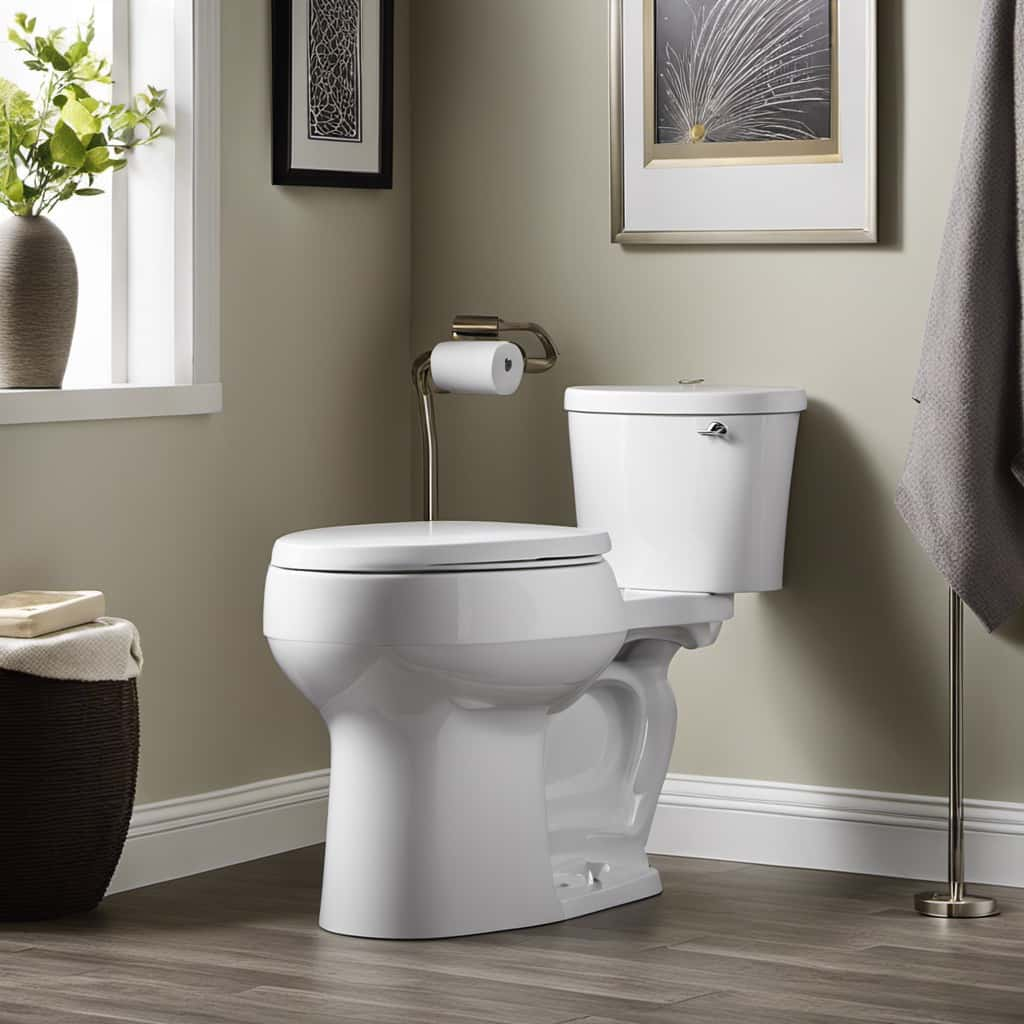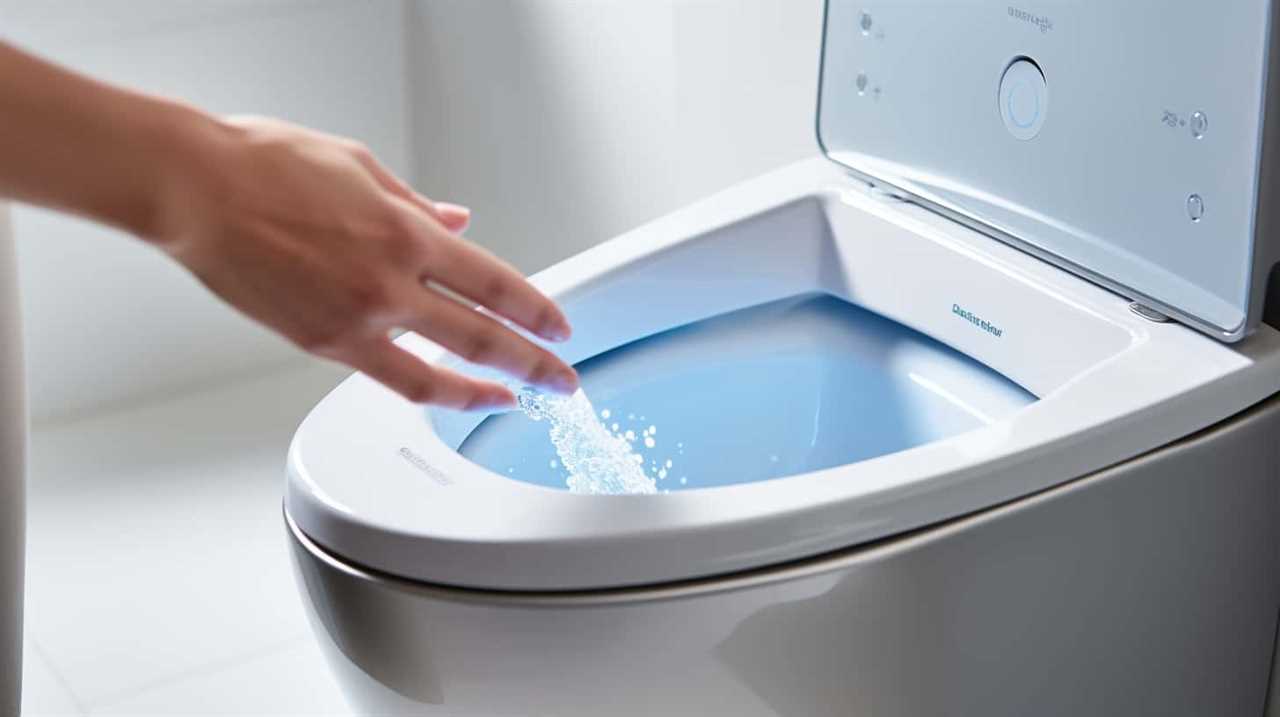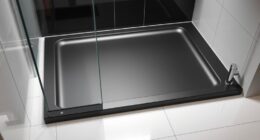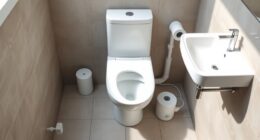Ever wondered if it’s possible to flush a toilet without running water? Well, let us enlighten you!
In this article, we’ll explore various techniques and methods to overcome the challenge of flushing without a water supply.
From using buckets or containers to repurposing rainwater, composting toilet systems, and even greywater recycling, we’ve got you covered.
So, if you’re seeking practical and informative solutions to achieve mastery over this essential task, read on!
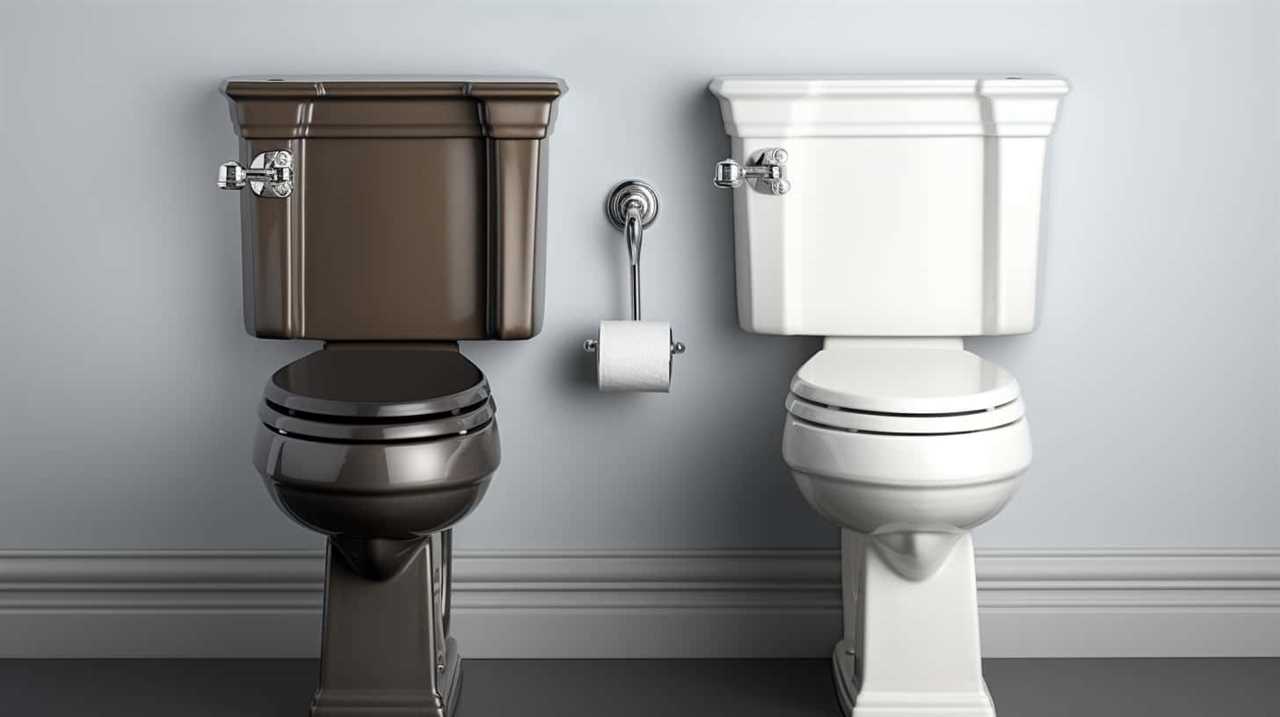
Key Takeaways
- There are several alternatives to flushing a toilet without running water, such as pouring water from a container or bucket into the toilet bowl, double flushing, and using gravity, dual-flush, pressure-assisted, vacuum-assisted, or bagging system toilets.
- Water-saving devices and strategies can also be used to conserve water, including toilet tank displacement, adjustable flapper valves, flush valve retrofit kits, dual-flush conversion kits, water-efficient toilets, prompt leak fixing, low-flow fixtures, high water efficiency-rated dishwasher and washing machine, rainwater collection for outdoor use, and limiting shower time.
- Collecting rainwater can be repurposed for flushing toilets, reducing reliance on running water, helping in water conservation during emergencies, and providing a sustainable source of water.
- Composting toilet systems offer benefits such as environmental-friendliness, cost-effectiveness, versatility, and odor control. Troubleshooting common issues with composting toilets includes adjusting moisture levels, understanding carbon-nitrogen balance, ensuring proper ventilation, and regular maintenance and cleaning.
Using Buckets or Containers
Sometimes, we can flush our toilet without running water by using buckets or containers. This technique is particularly useful in emergency situations where water supply is limited or cut off.
To implement this method, you’ll need a container or bucket filled with water. Simply pour the water into the toilet bowl, aiming for the center to create enough force for a successful flush.
It’s important to note that using this method may not be as effective as using a traditional flush, but it can be a practical solution when water conservation is crucial. Additionally, make sure to dispose of the waste properly, following emergency sanitation guidelines.
Repurposing Collected Rainwater
To continue our discussion on conserving water in emergency situations, let’s explore how we can repurpose collected rainwater to flush our toilets.

One effective way to collect rainwater is by using a rain barrel, which is a container specifically designed to capture and store rainwater. By connecting a rain barrel to your downspout, you can collect and store a significant amount of water during rainfall.
This water can then be used to flush your toilets, reducing the reliance on running water. Repurposing collected rainwater not only helps in water conservation but also ensures that you have a sustainable source of water during emergencies.
Now, let’s move on to the next section and discuss utilizing a composting toilet system.
Utilizing a Composting Toilet System
Using a composting toilet system allows us to effectively manage waste without relying on running water. Here are some key benefits of composting toilets and common troubleshooting issues to consider:
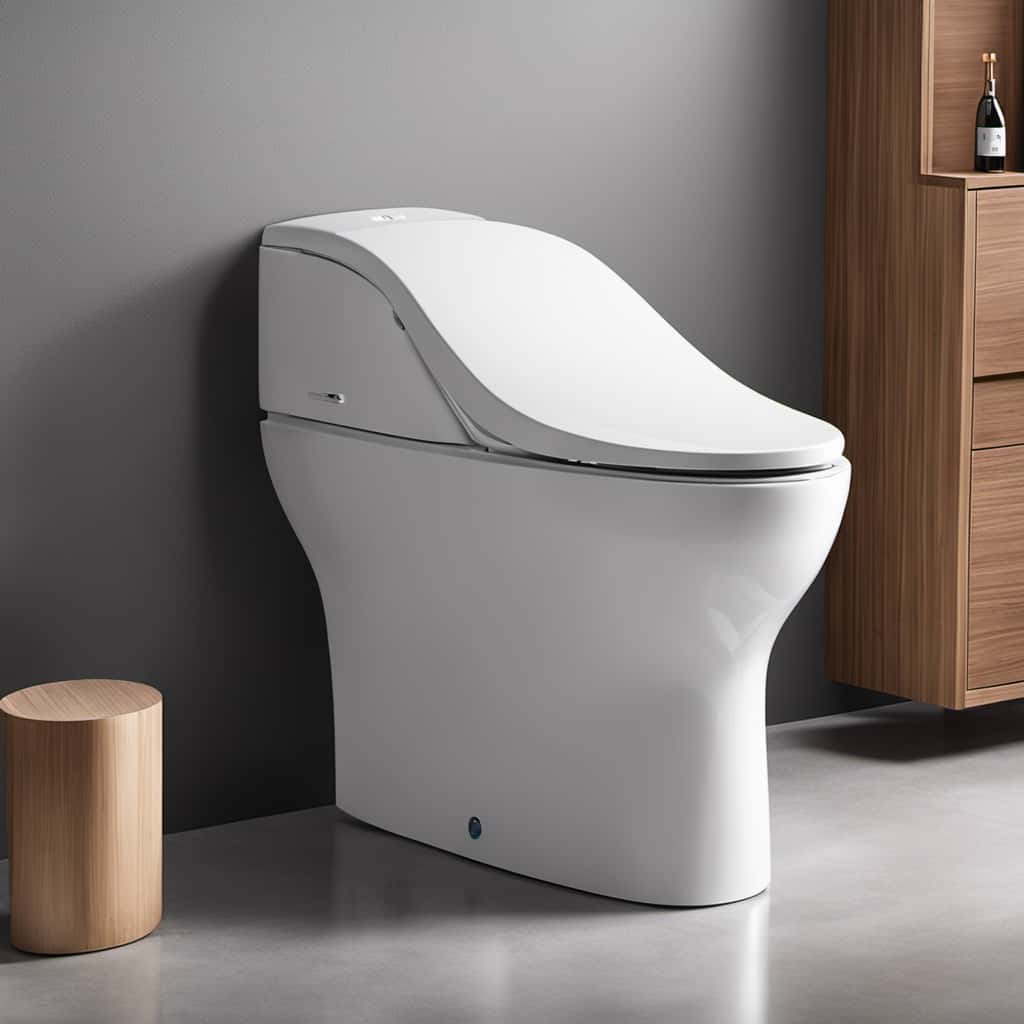
- Benefits of composting toilets:
- Environmentally-friendly: Composting toilets reduce water consumption and minimize pollution by converting waste into nutrient-rich compost.
- Cost-effective: By eliminating the need for water, composting toilets can significantly lower water bills.
- Versatility: Composting toilets can be used in various settings, including off-grid homes, cabins, boats, and RVs.
- Odor control: Properly maintained composting toilets utilize natural processes to mitigate odors and ensure a pleasant indoor environment.
- Troubleshooting common issues with composting toilets:
- Moisture levels: Adjusting moisture levels in the composting chamber can prevent excessive dryness or excessive moisture.
- Composting process: Understanding the right balance of carbon-rich materials (such as sawdust) and nitrogen-rich materials (such as human waste) is crucial for effective composting.
- Ventilation: Proper ventilation is necessary to prevent odor buildup and promote aerobic decomposition.
- Maintenance and cleaning: Regular maintenance, including emptying the compost bin and cleaning the toilet, ensures optimal performance and hygiene.
Installing a Greywater Recycling System
Continuing our exploration of sustainable waste management options, let’s now delve into the installation of a greywater recycling system, which allows us to further reduce water consumption and maximize efficiency. Greywater recycling is the process of collecting and treating water from sources such as sinks, showers, and washing machines, and reusing it for non-potable purposes like toilet flushing and irrigation. By implementing a greywater recycling system, we can significantly reduce our reliance on freshwater sources and minimize the strain on our environment.
To help you understand the benefits of greywater recycling, here are some water-saving tips for everyday household use:
| Water-Saving Tips |
|---|
| Fix leaks promptly |
| Install low-flow fixtures |
| Use a dishwasher and washing machine with high water efficiency ratings |
| Collect rainwater for outdoor use |
| Limit shower time |
Exploring Alternative Flushing Methods
Now, let’s dive into alternative flushing methods that can be used when there’s no running water available.
Here are four options to consider:
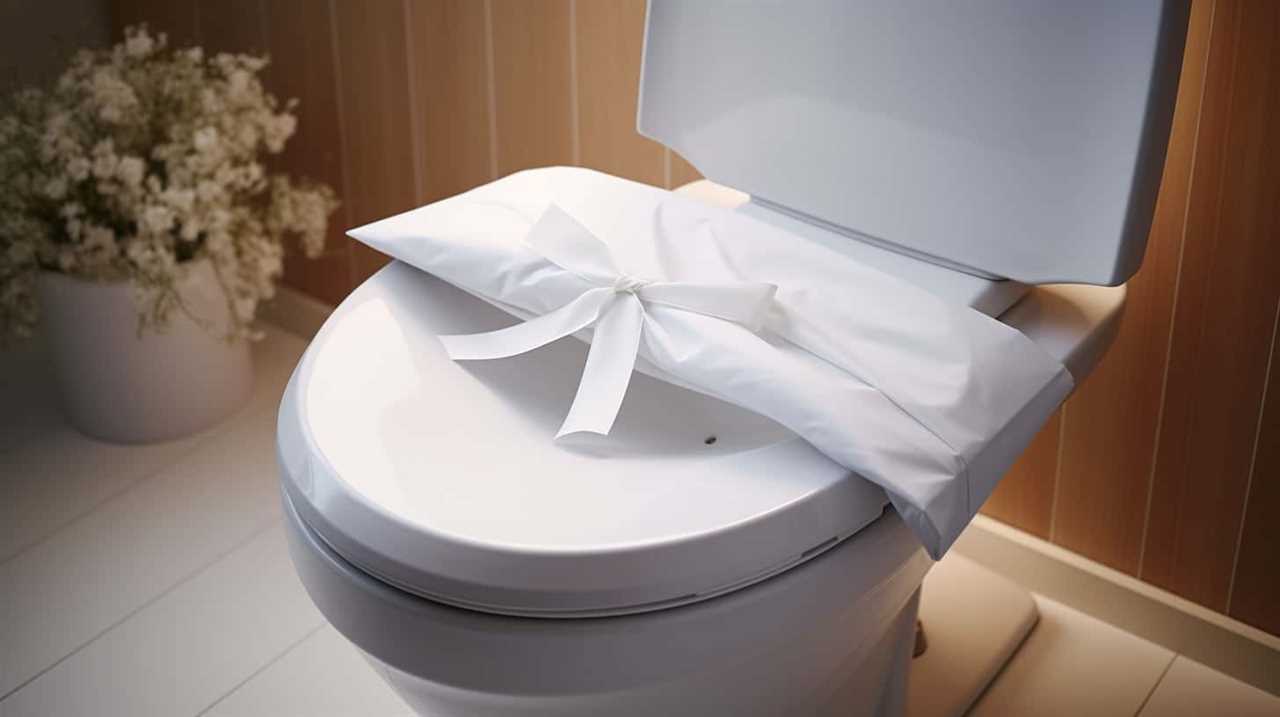
- Dry composting: This method involves separating solid waste from liquid waste. The solid waste is collected in a composting bin, where it decomposes over time. The liquid waste can be diverted to a separate container or used for watering plants. This not only eliminates the need for water for flushing but also produces nutrient-rich compost for gardening.
- Vacuum assisted flushing: This method utilizes a vacuum system to create suction and flush the toilet. It requires less water compared to traditional flushing methods. The vacuum technology ensures efficient removal of waste, making it a viable option for areas with limited water supply.
- Bucket flushing: In this method, a bucket of water is manually poured into the toilet bowl to initiate flushing. While it may require more effort, it’s a simple and effective way to flush without running water.
- Portable camping toilets: These compact toilets are designed for outdoor use and don’t require running water. They typically use chemicals or composting techniques to break down waste, making them suitable for temporary or emergency situations.
With these alternative flushing methods, you can still maintain sanitation and hygiene even when running water isn’t available.
Frequently Asked Questions
How Much Water Does a Typical Flush Use in a Regular Toilet?
A typical flush in a regular toilet uses around 1.6 to 3 gallons of water. However, with water-saving toilets, this amount can be reduced to 1.28 gallons or even lower, promoting water conservation and efficiency.
Can Flushing the Toilet Without Running Water Save Money on Water Bills?
Yes, flushing the toilet without running water can save money on water bills. There are alternative methods, like using a bucket of water or a composting toilet, that promote water conservation.
What Are the Environmental Benefits of Using Alternative Flushing Methods?
Using alternative flushing methods, such as waterless toilets, offers numerous environmental benefits. These include reducing water consumption and minimizing strain on water resources. Comparing water usage in different flushing methods reveals the advantages of waterless options.
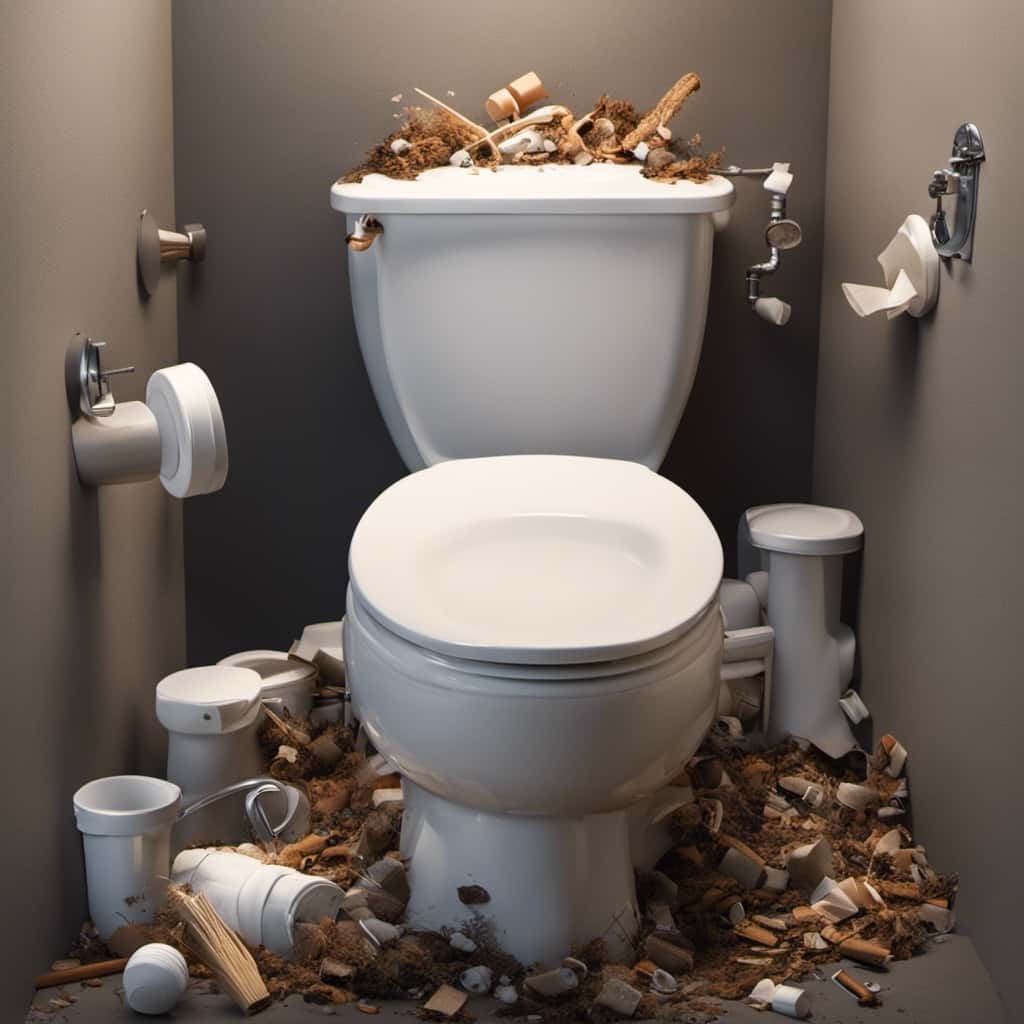
Are There Any Health Concerns When Using a Bucket or Container to Flush the Toilet?
Yes, there are health risks when using a bucket or container to flush the toilet. It can lead to unsanitary conditions, odor, and potential contamination. However, alternative methods can mitigate these concerns.
What Are the Potential Drawbacks of Installing a Greywater Recycling System for Toilet Flushing?
When considering the potential drawbacks of installing a greywater recycling system for toilet flushing, it is important to assess the potential maintenance requirements and cost effectiveness. These factors play a crucial role in determining the feasibility of such a system.
Conclusion
In conclusion, there are several practical and innovative ways to flush a toilet without running water.
By utilizing buckets or containers, repurposing collected rainwater, or exploring alternative flushing methods like composting toilets or greywater recycling systems, you can save water and contribute to a more sustainable lifestyle.
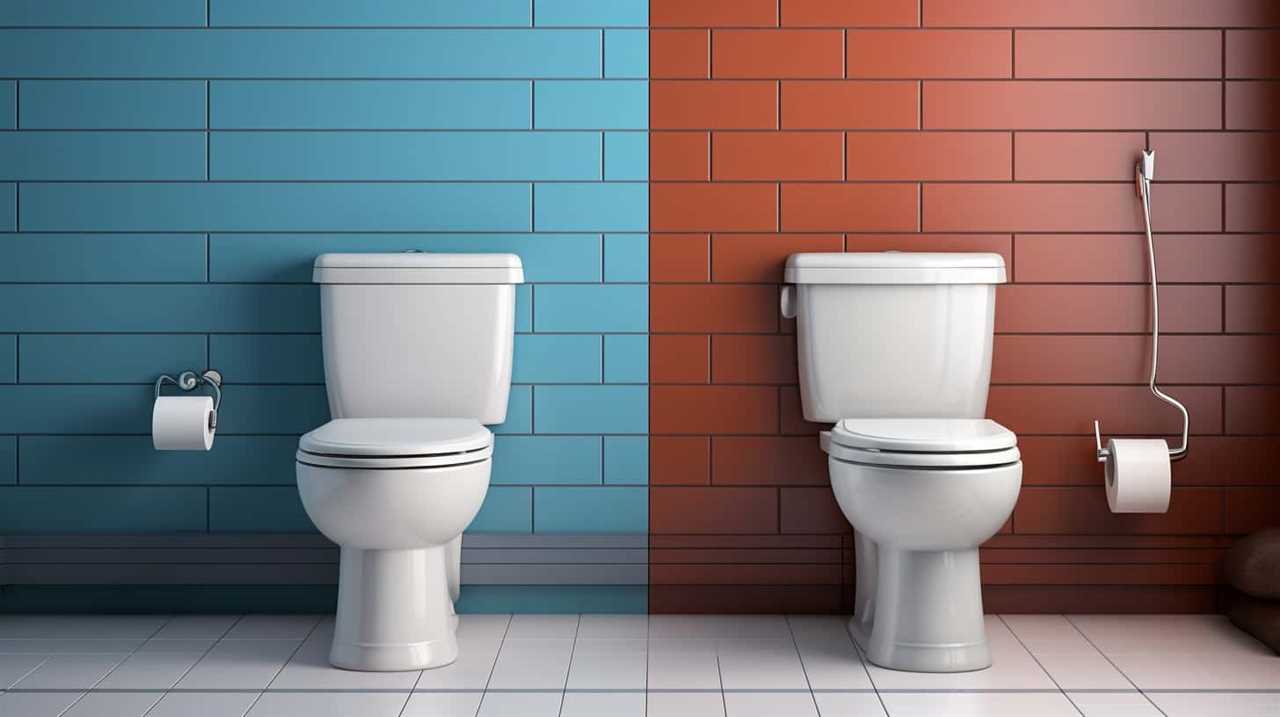
So, the next time you find yourself without running water, remember these clever solutions to keep your toilet flushing smoothly.
